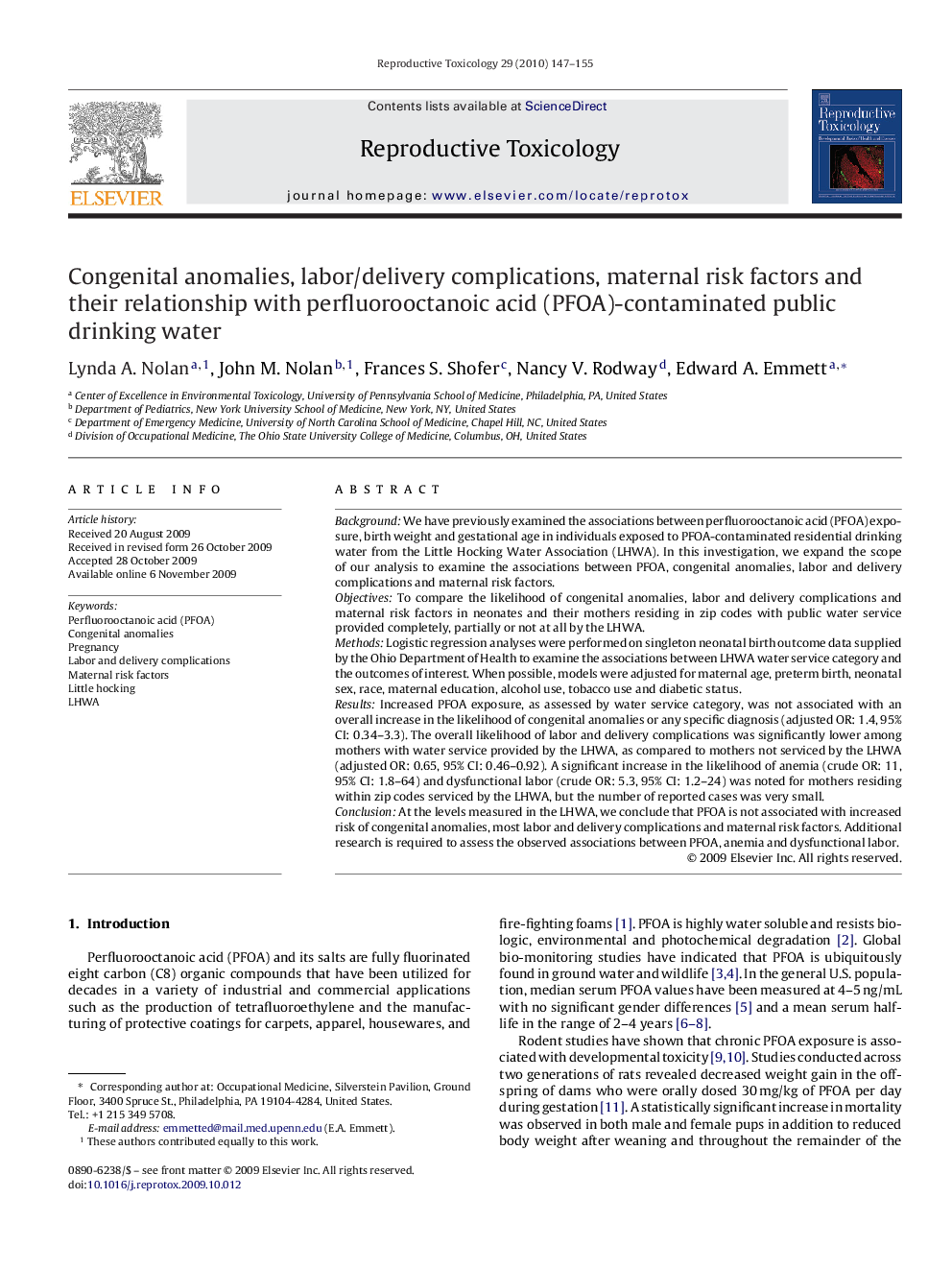| کد مقاله | کد نشریه | سال انتشار | مقاله انگلیسی | نسخه تمام متن |
|---|---|---|---|---|
| 2594268 | 1132262 | 2010 | 9 صفحه PDF | دانلود رایگان |

BackgroundWe have previously examined the associations between perfluorooctanoic acid (PFOA) exposure, birth weight and gestational age in individuals exposed to PFOA-contaminated residential drinking water from the Little Hocking Water Association (LHWA). In this investigation, we expand the scope of our analysis to examine the associations between PFOA, congenital anomalies, labor and delivery complications and maternal risk factors.ObjectivesTo compare the likelihood of congenital anomalies, labor and delivery complications and maternal risk factors in neonates and their mothers residing in zip codes with public water service provided completely, partially or not at all by the LHWA.MethodsLogistic regression analyses were performed on singleton neonatal birth outcome data supplied by the Ohio Department of Health to examine the associations between LHWA water service category and the outcomes of interest. When possible, models were adjusted for maternal age, preterm birth, neonatal sex, race, maternal education, alcohol use, tobacco use and diabetic status.ResultsIncreased PFOA exposure, as assessed by water service category, was not associated with an overall increase in the likelihood of congenital anomalies or any specific diagnosis (adjusted OR: 1.4, 95% CI: 0.34–3.3). The overall likelihood of labor and delivery complications was significantly lower among mothers with water service provided by the LHWA, as compared to mothers not serviced by the LHWA (adjusted OR: 0.65, 95% CI: 0.46–0.92). A significant increase in the likelihood of anemia (crude OR: 11, 95% CI: 1.8–64) and dysfunctional labor (crude OR: 5.3, 95% CI: 1.2–24) was noted for mothers residing within zip codes serviced by the LHWA, but the number of reported cases was very small.ConclusionAt the levels measured in the LHWA, we conclude that PFOA is not associated with increased risk of congenital anomalies, most labor and delivery complications and maternal risk factors. Additional research is required to assess the observed associations between PFOA, anemia and dysfunctional labor.
Journal: Reproductive Toxicology - Volume 29, Issue 2, April 2010, Pages 147–155